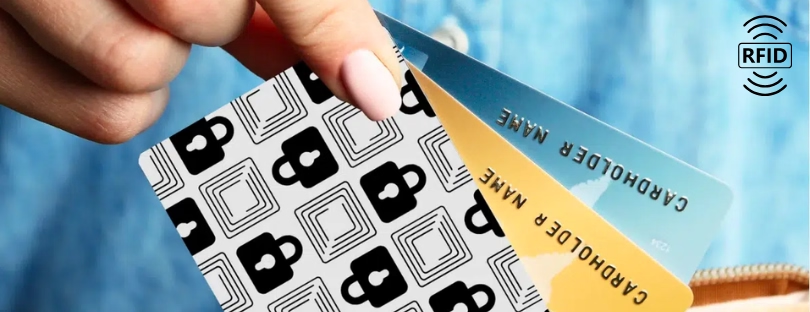
Contactless Payment Card Growth Surges in 2023
In the age of tap-and-go, contactless payments are not just a trend—they’re a revolution. We’ve all seen the rise of NFC payments, but have you wondered just how much they’ve grown? The latest report from the Smart Payment Association (SPA) reveals a staggering surge in the adoption of contactless payment cards. From overcoming global challenges to leading the charge in eco-friendly innovations, the industry is evolving at a breakneck pace. Contactless payment card growth
Let’s dive into the details and see what’s shaking up the world of smart payment cards.
The Rise of Contactless Payment Cards
The Surge in Shipments
2023 was a banner year for contactless payment cards. According to the SPA, nine out of ten smart payment cards shipped last year supported contactless payments. This marks a significant jump from previous years, showing that consumers across the globe are embracing the convenience of touch-free transactions.
Why the Increase?
Several factors contributed to this surge. The global silicon chip shortage had previously hampered production, but as disruptions eased, manufacturers were able to ramp up shipments. Additionally, new members joined the SPA, and existing members expanded their markets, leading to an uptick in overall shipment numbers.
Statistics That Speak Volumes
To put it in perspective:
- Total Shipments: 3.2 billion smart payment cards shipped in 2023, up from 2.6 billion in 2022.
- Contactless Cards: 88% of these cards supported contactless payments, a 4% increase from 2022.
- Growth in Volume: Overall contactless shipment volumes saw a whopping 27% increase.
Eco-Friendly Card Innovations
The Green Shift Contactless payment card growth
A notable trend in 2023 was the shift towards eco-friendly payment cards. These cards, which make up 21% of the total SPA shipments, are part of a broader movement to reduce the use of PVC and adopt more sustainable materials.
Regional Leadership
Europe leads the charge with 50% of these eco-friendly cards, followed by the Americas at 40%. This regional split highlights Europe’s commitment to sustainability and innovation in payment technologies.
Industry Collaboration
The transition to greener cards is fueled by close collaboration within the industry. Innovations aren’t limited to the cards themselves but extend to the entire lifecycle—from materials to packaging and recycling.
Global Market Insights
Worldwide Adoption
Every country now issues dual-interface cards that support contactless payments. The lowest regional share of contactless shipments is 78%, while the highest is an impressive 99%.
Consumer Preferences
Consumers are driving this change. The convenience and speed of contactless payments have made them a preferred method of transaction, propelling a significant increase in demand for contactless-enabled cards.
Overcoming Challenges
Chip Shortage Impact
The global silicon chip shortage was a major hurdle, but the industry adapted. With disruptions reducing throughout the year, manufacturers could meet the growing demand and replenish inventories.
Market Expansion
The expansion of SPA’s membership and the extension of market perimeters played a crucial role in capturing incremental shipment figures, showcasing the dynamic nature of the smart payment card industry. Contactless payment card growth
The Importance of Contactless Payment Cards in Modern Travel
Contactless payment cards have become a game-changer in the travel industry, significantly enhancing the convenience and efficiency of the travel experience. These cards eliminate the need for carrying cash or dealing with currency exchange hassles, making transactions quick and seamless, whether you’re hopping on a bus in a foreign city, paying for a taxi, or buying a coffee at the airport.
For travelers, the ability to simply tap and pay means reduced wait times and a more streamlined journey, allowing them to focus on enjoying their trip rather than worrying about financial logistics. Additionally, contactless payments offer increased security by minimizing the risk of theft and fraud, as the card never leaves the traveler’s hand, and advanced encryption technologies protect each transaction. With the adoption of contactless payments in public transport systems, hotels, and retail outlets worldwide, travelers can navigate new environments with ease and confidence, making their journeys smoother and more enjoyable.
Future Trends
Digital Product Passports
Looking ahead, the fashion industry is set to issue 62.5 billion Digital Product Passports annually by 2030. This move towards digitization and traceability could spill over into other sectors, further boosting the demand for smart payment solutions.
Sustainable Innovations
As eco-friendly practices gain traction, we can expect more innovations aimed at reducing the environmental impact of payment cards. From biodegradable materials to enhanced recycling programs, the future looks green.
Expanding Contactless Payments
The integration of contactless payments in everyday scenarios is growing. For instance, Venice has rolled out contactless payments across its public transport system, including water buses, trams, and ferries. This expansion into diverse areas of daily life underscores the versatility and convenience of contactless technology.
The Consumer Experience
Convenience at Its Best
For consumers, the appeal of contactless payments is undeniable. No more fumbling with cash or waiting for chip readers—just a simple tap-and-go. This convenience is especially valued in busy urban settings where time is of the essence.
Security Concerns
Despite the convenience, some consumers worry about the security of contactless payments. However, advancements in encryption and authentication technologies have made these transactions more secure than ever. The SPA’s commitment to security ensures that consumers can tap with confidence.
A Closer Look at the Numbers
Breaking Down the Data
Let’s take a closer look at some of the key data points from the SPA’s report:
- 3.2 Billion Cards: The total number of smart payment cards shipped in 2023.
- 27% Growth: The increase in overall contactless shipment volumes compared to the previous year.
- 21% Eco-Friendly: The share of global shipments accounted for by eco-friendly cards.
Regional Breakdown
The regional data provides further insights:
- Europe: Leads in eco-friendly card shipments with 50%.
- Americas: Follows with 40%.
- Global: The lowest regional share of contactless shipments is 78%, and the highest is 99%.
Industry Collaborations and Innovations
Working Together
The payment card industry is a prime example of how collaboration can drive innovation. SPA members are working together to develop new materials, improve production processes, and ensure that end-of-life recycling is as efficient as possible.
Cradle to Grave
This end-to-end approach, often referred to as “cradle to grave,” involves rethinking every aspect of the payment card lifecycle. From the inks used on the cards to the envelopes they come in, every detail is being scrutinized for potential environmental impact.
Key Players in the Contactless Payment Card Industry
Several major players dominate the contactless payment card industry, driving innovation and setting standards for security and convenience. These companies are at the forefront of technological advancements, ensuring that contactless payments continue to grow in popularity and functionality.
1. Visa
Visa is a global leader in digital payments, offering a wide range of contactless payment solutions. Their Visa contactless cards are accepted in millions of locations worldwide, making it easy for consumers to tap and pay securely.
2. Mastercard
Mastercard is another major player, providing secure and efficient contactless payment options. Their contactless technology, known as Mastercard Contactless, is designed to offer fast and reliable transactions, enhancing the consumer experience.
3. American Express
American Express has also embraced contactless payment technology, offering Amex contactless cards that provide a seamless payment experience. Known for their strong customer service and security features, Amex ensures that their contactless solutions meet the highest standards.
4. Discover
Discover offers contactless payment options through their Discover it® contactless cards. These cards are designed to provide convenience and security, allowing consumers to make quick payments with just a tap.
5. UnionPay
UnionPay, a leading card issuer in China, has rapidly expanded its contactless payment offerings. With a strong presence in Asia and growing acceptance worldwide, UnionPay contactless cards cater to a large and diverse customer base.
6. Apple Pay
Apple Pay has revolutionized the contactless payment landscape by integrating with the iPhone and Apple Watch. This digital wallet allows users to make secure payments using their Apple devices, making it a popular choice for tech-savvy consumers.
7. Google Pay
Google Pay offers a similar service, enabling users to make contactless payments with their Android devices. By storing payment information securely, Google Pay provides a fast and convenient way to pay on the go.
8. Samsung Pay
Samsung Pay combines contactless payment technology with magnetic secure transmission (MST), allowing it to work with both NFC-enabled terminals and traditional magnetic stripe readers. This versatility makes it a valuable player in the contactless payment market.
9. PayPal
PayPal, known for its online payment solutions, has also ventured into the contactless payment space. With PayPal Here and other contactless options, they provide a comprehensive payment ecosystem for both online and in-person transactions.
10. Gemalto (Thales Group)
Gemalto, now part of the Thales Group, is a key provider of digital security solutions, including contactless payment cards. Their technology ensures secure and efficient transactions, making them a crucial player in the industry.
11. IDEMIA
IDEMIA specializes in augmented identity, providing innovative contactless payment solutions. Their expertise in biometric security and card manufacturing positions them as a leading player in the market.
12. NXP Semiconductors
NXP Semiconductors is a major supplier of NFC technology, which is essential for contactless payments. Their chips are used in a wide range of contactless payment cards and devices, enabling secure and reliable transactions.
13. CPI Card Group
CPI Card Group is a leading provider of payment card solutions, including eco-friendly contactless cards. Their commitment to sustainability and innovation makes them a key player in the industry.
14. G+D Mobile Security
Giesecke+Devrient (G+D) Mobile Security offers a range of contactless payment solutions, focusing on security and innovation. Their products are used by financial institutions and governments worldwide.
15. Infineon Technologies
Infineon Technologies provides semiconductor solutions for contactless payment cards, ensuring high security and performance. Their technology is integral to the functioning of many contactless payment systems.
These companies are driving the adoption and development of contactless payment technology, making everyday transactions faster, more secure, and more convenient for consumers around the globe.
The Road Ahead
Embracing Change
As we move forward, the payment card industry will continue to evolve. Embracing change and innovation is key to staying ahead in this dynamic market. Whether it’s through adopting new technologies or developing sustainable practices, the future of smart payment cards looks promising.
Conclusion
The growth in contactless payment card shipments is a testament to the evolving preferences of consumers and the adaptability of the industry. With a focus on convenience, security, and sustainability, the future of smart payment cards is bright. As we look ahead, the continued collaboration and innovation within the industry will ensure that we keep pace with the demands of the modern world. Contactless payment card growth











